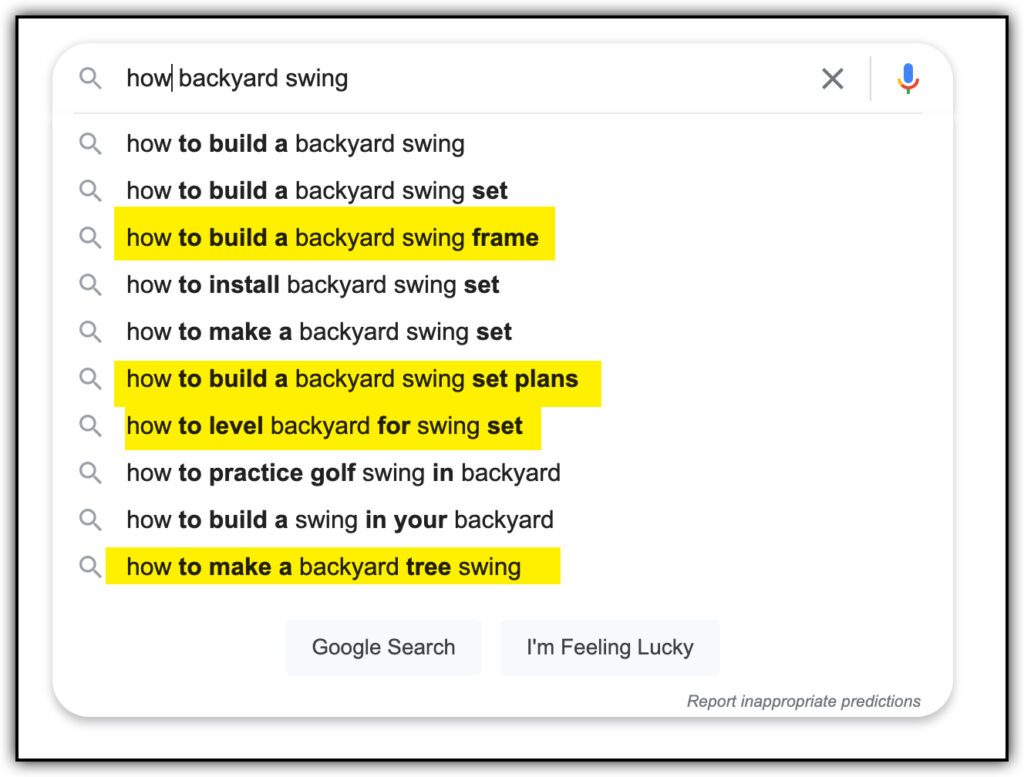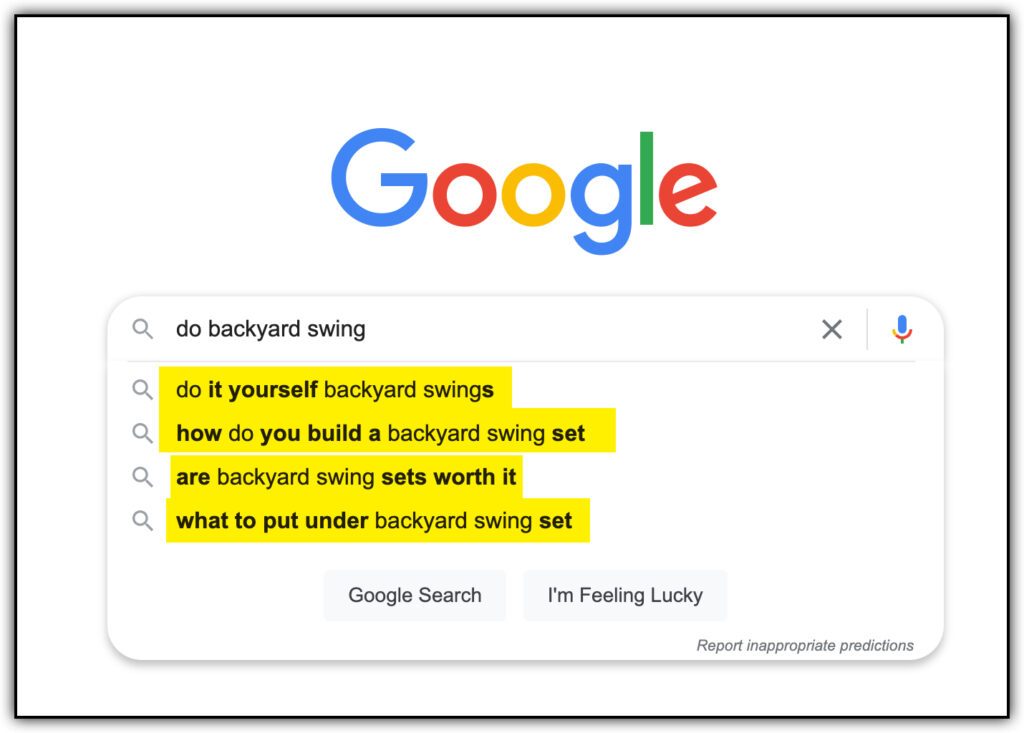
The cat is out of the bag about blogging. Well, it’s out of the bag again. Really, it’s kind of a cyclical thing. Having been around the block for more than a decade, I have seen several cycles of blogging enthusiasm vs blogging is dead paradigm shift back and forth.
—>>Build An Income-Generating Website That Lasts Decades!
—>>Watch how I built my business step-by-step in a few minutes.
—>>Earn online income for a lifetime.
>>Start Now<<
Now that everyone is working from home pretending to be productive at their real jobs, there’s been another surge of interest in how to make money blogging, and one of the specific ways people look to earn is through review blogs. Whatever the reason, review blogs are simple to make, still profitable, and easier to make than ever before. The truth is, blogs are not dead.
The thing about making money from a review blog is that it’s not something you can just do in a day. It takes me a couple thousand words below to explain the process of how to build the blog, get traffic to it, monetize it, and grow it to a full time business, and that’s just the beginning. There’s a huge difference between “understanding” how it works, and actually getting the work done. Unfortunately, doing the work is a lot less exciting than reading about it and thinking about getting rich.
However, if you stick with it, put the hours, and pick yourself up out of the ditch of disillusionment from time to time, what you end up with is a relatively simple stream of income you can rely on. If you do it right (how I recommend), you’ll actually enjoy the work.
So here’s how I have built my own review blogs and made money from them for more than a decade. If you’ve read other blog posts on the topic, I think some of my perspectives are quite unique compared to standard advice you’ll read in other places, so let me know your thoughts in the comments.
- 1. How Review Blogs Make Money
- Affiliate Revenue
- Ad Revenue
- Sponsored Content
- 2. Can YOU Actually Earn Money From A Review Blog?
- Any Topic Works
- Building A Blog Is Simple
- Why Most People Fail
- 3. How To Make A Successful Review Blog
- Pick A Topic
- Build The Website
- Continually Add New Content
- 4. What Type of Content Works Well For Review Blogs?
- Text
- Photos & Images
- Videos
- How To Come Up With Unlimited Content Ideas
- Buyer’s Guides
- Comparison (Versus)
- Listicles
- Content Writing Tips For Beginners
- Use A Template
- Have A Minimum Word Count
- Use A Review Plugin
- 5. What If Your Reviews Don’t Rank?
- Create Information Content, Then Link Back
- Engage On Social Media
- Reassess Your Review Quality
- Five Vital Lessons From A Decade Of Blogging
- 1. Think About What People Search For Online
- 2. Opportunities Are Always Expanding
- 3. You Don’t Have To Be #1 To Be Successful
- 4. Big Posts For Big Topics, Many Posts For Small Topics
- 5. Do It First, Then Analyze
- Should You Start A Review Blog?
1. How Review Blogs Make Money

Let’s get one thing straight – although owning a review blog doesn’t seem like that serious of a job, review blogs make serious money. I’m talking multiple $10,000’s per month for the best of the best. Even an average size, high quality site can make in the low $10k’s per month. Don’t sleep on this opportunity.
Affiliate Revenue
The most obvious way to earn money from a review blog is to promote products on the review articles you publish. That’s the whole point, right? You test out products, show people how to use them, and say if they are worth the cost. If people buy through your link, then you make a commission. That’s how affiliate marketing works.
Some styles of review blogs use the shotgun approach, where you basically review as much stuff as possible, and you’ll make some sales of some things, some of the time. You just blast and move forward. Whatever hits, hits.
The advantage here is that you aren’t raelly dependent on one single product to sell, and you get to write a diverse set of content. You become an “authority” on the topic simply by the volume of reviews you produce. The downside is that sales tend to be kind of random, and you still end up with 80/20 where 80% of your income comes from 20% of your reviews, so many reviews end up feeling kind of like a waste of time.
Another style of review blog is to fixate on one single product and funnel all your traffic to one single review. My site here is a good example of this, where I have a “top product”, and it’s recommended to all my readers.
The advantage here is that you can play with a lot of optimization techniques to really get your conversions going. With a strong product that has a good affiliate program, you can start doing massive numbers for a company, and even negotiate a better deal, or customized graphics, and other things to optimize your funnel even further.
The downside is that it kind of becomes like a job in that you rely on a single company for income, and it can feel less diversified. If the company does something dumb and hurts their own sales, your income falls as well.
Ad Revenue
Affiliate sales can be supplemented, or even replaced by ad revenue. These are general ad placed on your site by Google or an ad broker like Mediavine. You basically place some code on your site so they can track ads properly, then you’re good to go. Super easy to install.
The upside is that you can increase your monthly net income without doing extra work. As long as you have traffic, the ads pretty much run themselves, and you just watch the money roll in.
There are a lot of downsides.
One, you need a lot of traffic to make good money. I have a site doing 200 visits a day and it makes less than $10 per day. I have another site doing 7000 visits a day and it makes about $250 per diem. So you need a lot of traffic to make a decent income. It is also often the case that in order to get into the best ad networks you even need a minimum traffic volume!
Two, it makes your site look ugly and annoying. Yes, I’m aware the ads on the site you’re reading now are ugly and annoying. Nobody likes ads. They make money though, so I try to not put them on full blast (you can tweak the settings) to find a balance.
Three, if your traffic suffers, your income suffers. With affiliate revenue, there’s often ways to optimize and tweak things to improve revenue if your traffic slumps. You can re-write a review, promote a different product, or start collecting emails. You have options for quick fixes. When you are dependent on traffic from Google for revenue, a change in the algorithm could make your life very, very busy for the next six months while you try to recover.
Sponsored Content
Sponsored content is not something I’ve personally done, but it’s definitely an option, This is basically getting paid to write about companies and their products. Instead of getting paid per sale, you get paid to publish content. This is very popular with social media influencers, who can earn 5-figure payouts for a single sponsored post.
With a review blog, this could come in the form of getting free products, a flat fee per review written, or you could simply write something about a company to help create brand awareness.
The upside here is that you get compensated no matter how much you sell. It’s kinda nice to get paid up front for your work. The downside is that you often need to prove your worth before sponsored content even becomes an option, i.e. you need a traffic report and a plan for promotion. You can’t just approach a company with a brand new blog and ask to get paid.
2. Can YOU Actually Earn Money From A Review Blog?

Yes, without a doubt, there is a way that YOU, reader, can make money from a review blog. After ten years building blogs and taking three of them to the six-figure income level, I can say with confidence that anyone can do this. It’s not rocket science. The game isn’t saturated. The steps are simple enough.
Any Topic Works
The thing about review blogs is that any topic can work, despite what you may read online. Lots of course sellers have an incentive to tell you that “only some topics works” because guess what… they are selling a product that teaches you how to pick a niche.
The reality is, however, that people buy everything online these days. Literally anything from fresh fruit, to random electronic parts for vintage video game systems, baby potty training tools. There is a business, somewhere, selling that stuff.
Now, that isn’t to say that every single company has an affiliate program you can promote, but as I described above, there are multiple ways to make money from a blog that gets traffic. The point to understand here is that people are searching for stuff online. If you can find a way to write about that stuff, educate people, and help them in some way, you can get traffic to the blog. You may need to get creative with monetization strategies for some topics, but the foundation is there.
Trust me – if you’re into your topic, someone else is too. You’ll figure it out.
Building A Blog Is Simple
The actual process of making the blog is simple, and with a few emails, you can probably get your host to do it free, assuming they don’t already offer this service.
When I say “building a blog”, I’m talking about the actual technical aspect of the website building process: the WordPress install. Of course, there won’t be any content or traffic going to the site at this point, but getting your blog online and accessible from anywhere on Earth is a non-issue. It takes a couple clicks. Done. Technology has come a long way since the 90’s.
Even the “building out” phrase, where you create content, get traffic, and monetize the site is pretty simple. I’ll go over the steps below, but in general, you just need to be publishing content. If you can type, you can publish articles, and if you continually publish new articles to your site you’ll start to get traffic.
The publishing strategy for review blogs is pretty simple as well. Just pick a bunch of related products, and write 2000 word articles about why they are good or bad products, then link to the product, or link to a better product. Done. Easy.
The more difficult part comes when you start to get serious and want to double, triple, or 100x your current traffic. That takes some strategy, but one step at a time right? It’s not like this business is a total cakewalk, but the ideas are simple to comprehend. The point is that the skills involved in building a review blog are actually not super hard to learn.
Why Most People Fail
Most people don’t fail because of technical issues. In fact, I think most people actually “get it” and understand the process of how to make money blogging. Again. It’s pretty simple work.
Where most people fail is that they get bored and disillusioned along the way, then stop working. Maybe they get up to 100 visits a month, then get frustrated because they can’t grow beyond that. Or maybe they don’t even get that far. Maybe they write some articles, but the articles don’t rank, so they cancel their hosting and delete their website after a month.
Hurdles suck. It’s no fun to work hard and then Google basically says, “Nah, your writing is shit. No thanks”.
The bloggers who succeed are the ones who don’t take it personally. They sit down, think about what’s going wrong with their strategy, and keep pressing forward. It’s the “try again” mentality that really creates successful bloggers. Given enough time and enough tries, they eventually figure something out.
I think inexperienced entrepreneurs have this vision of the “genius” who succeeds on their first time because they have such a cool idea that it just hits, then they sell the company for a few million and retire. In reality, most successful entrepreneurs have multiple failures under their belt, and even experience many failures within their own company.
To succeed in any business, including blogging, you have to be willing to take risk, fail, and try again. It maybe sounds silly to apply that type of philosophy to something as basic as a review blog, but your mind really does go through the same process as any entrepreneur. It doesn’t matter if you’re building the next Netflix or reviewing lawn fertilizer, it’s a process of facing a challenge, overcoming it, then preparing to meet the next challenge.
There is no “easy street” in business.
3. How To Make A Successful Review Blog

Actually making a review blog is a step by step process that takes more than 20,000 words to explain. It’s not something where I can take you from zero to hero right on this page, but I can give you the three approximate stages of successful blog building, and then you can move forward with a broad idea of what to expect.
Pick A Topic
First, you need to pick a topic for your site, AKA pick a niche as the bloggers like to say. Many courses will have you go through a complicated process of analyzing traffic and all sorts of data to find the “perfect” niche. I guess this is okay if you are an experienced blogger and want to optimize your time, and you don’t really care that much about the niche. You are just grinding it out, and probably have some writers working for you at this point. Passion for the topic isn’t as important. OK, fine.
For new bloggers though, I think a passion for the topic, or at the very least, a basic level of interest in learning, is vital. In fact, being interested in the topic should trump any type of metrics in my opinion.
Why? Because a huge part of building a successful review blog is a mental game, especially for someone doing it for the first time. You’re going to doubt yourself a lot during the process of building your blog. If you are writing about something boring, then you are going to have double the mental anguish to battle, and a bigger chance of quitting.
At the very least, when you are interested in the topic, you can convince yourself you are enjoying the work. You get to read news articles. You get to express your opinion on something important to you. You get to buy fun stuff and play with it; take pictures of it; become better at your hobby.
This was the case with my VPN website I created in 2010. I was living in China at the time, and it was a true PITA trying to get on Netflix and Facebook, so I had a real interest in finding the “best VPN for China”. I had insider knowledge. I could test the VPNs personally before writing reviews. I had lots of screenshots and tutorials you couldn’t find on other VPN review blogs. I even emailed back and forth with companies to talk about issues I was having. I had inadvertently become an expert on VPNs in China because I was living there. This was my angle as a blogger, and it worked to the tune of $10,000 per month in come.
It wasn’t like I was totally in love with VPN technology. That would be weird IMO. It was interesting, however, and I felt like I was doing some good by writing honest reviews. That’s why it’s important to pick a good topic for yourself. If it’s low traffic, or you find something better later, you can always make a new blog after you have some experience under your belt. You don’t have to hit a home run on your first try.
Build The Website
After you’ve taken the time to think about what you want to make your review blog about, you need to actually build the site. This is basically a less-than-five-minutes process if you use any quality host. It’s not even worth explaining on this page, but you can see the steps here.
Once you do that, you can decide on a basic framework for your site. You should have some broad categories, a few specific tags, and you can organize things like your menu and sidebar. This is all very basic drag-n-drop stuff. It’s pretty intuitive. Of course, expect that you won’t be able to “rush through” the process. You still have to learn how to use your website and it’ll take some time to get things how you like them, but you won’t need any code to do it.
Plus, if you screw something up, you can simply delete it and redo it. Nothing is permanent on a blog. You can always fix it.
My advice here is to not spend too much time on useless stuff like getting a perfect logo, or organizing your menus perfectly. You’re going to want to change it later anyway, so good enough is good enough for now.
Continually Add New Content
After you have the structure set up for you review blog, you need to continually publish content on it to grow the traffic. Since you’re building a review blog, I recommend creating about five core reviews for products you plan to promote. You can research affiliate programs for these if you want, but don’t sign up or add affiliate links yet.
You can buy the products and take photos on your smart phone, but you don’t have to. Personally, I’d recommend the strategy of taking your own photos so you have original images and don’t need to credit sources. Plus, this means your review will come from personal experience. Otherwise, you’ll be aggregating knowledge from other websites, which is what everyone else is doing. It’s important to be a little unique so you can stand out amongst competition!
Perfection is not the goal here. You are going to be gaining a lot of experience in the next few years, so will likely update your review many times over. As long as your URL is edited to be /product-review/ instead of /my-thoughts-on-product-xyz-2022/ then nobody is going to notice when the review is changed.
So get a couple of core reviews done, then start creating informational content based around “keywords”. These are basically search terms people use to find information online. There are keyword tools like Ahrefs, or you can simply intuit based on your experience.
For example, if you were reviewing stuff for your backyard swing set blog, what type of questions would people ask Google?
- what are the cheapest backyard swing sets?
- what type of wood to use for backyard swing sets?
- are backyard swing sets safe?
- how to make a slide for a back yard swing set
These are just some basic questions I thought of, but imagine all the questions someone would have before and after buying a swing set. You can apply this same type of process to any topic.


Another example from real life. I just fixed my shower and bought the wrong “cartridge” for the shower handle unit. My old one is hard to push and pull, so I need to replace it. Now I have to Google things like
- what’s the right cartridge for moen chateau shower
- moen 1968 shower handle replica
- modern push pull shower handle units
- moen 1222 too large whats a smaller cartridge
Chances are, not all of those questions will have specific answers in Google, but i have to start somewhere. If some guy has a blog about bath and shower repair and includes any text or videos about Moen shower cartridges, then I’ll probably land on his site. Those cartridge things are about $50 each, and 5% commission from Amazon would be $2.50 per sale.
So your job from here on out is simply to continually answer all the questions you can think of, then link to your product reviews, or link directly to affiliate products.
More content = more traffic = more sales. That’s pretty much how it all works.
4. What Type of Content Works Well For Review Blogs?

Text
Text is the core component for any successful review blog. It’s amazing that after decades of technological innovation on the internet, text is still so powerful. The reality is that you could ignore every piece of advice on this blog and just have super informational, helpful, authentic, text-based content on your blog, and could still enjoy a level of success with it.
Of course, things like photos, video, and other web2 aspects enhance that success, but text is still the foundation you should focus on. Text is how search engines find, analyze, and rank your content. Text is what visitors rely on to process the most information in the quickest and most convenient way (you can’t skim a video very effectively, and you don’t get much information from a single image).
The text on your blog should speak to the reader. Write for humans, not for search engines. Instead of doing 100 hours of research on the latest search engine optimization techniques, think about what your human readers are actually hoping to see on the page. What is the intent of their search, and how can you satisfy that?
Technical optimizations may give you short term wins, but providing value to readers is a long term success strategy.
Photos & Images
Photos and images are a great way to add visual engagement to your site. Images can enhance understanding and engage with a different learning style. Plus, you get the bonus of an added trust element. If you are buying and testing the products you plan to review, this is an immediate way for readers to see that you do, in fact, have personal experience with the product.
Everyone has a smartphone these days, which means everyone has access to a high quality camera, so, “I don’t have a camera” is not a good excuse. The main mistake I see new bloggers make is with lighting. A low-lit, blurry photo in your kitchen at night is (maybe) better than nothing, but it’s not great. If you are going to take this blogging stuff seriously, you can set up a simple photography corner of your home with a tripod and light box. You could even take products outside, depending on what you’re reviewing.
Taking pictures of yourself using the product can be used to create tutorials, or simply add a visual guide to your product review.
Very simple graphics-based images can be created using tools like Canva, which has hundreds of templates for infographics, social media images, and more that can be customized in minutes to fit your blog.
Videos
Same as with pictures, your smartphone has a high quality video camera that can be used to shoot, edit and upload videos. A YouTube channel can be set up in a few minutes, and videos can be directly uploaded from your smartphone. You don’t have to focus on being a “YouTuber”, or even building a successful YouTube channel, but adding videos to your channel will allow you to embed them in your blog.
Videos keep people engaged with your content longer, and allow you to give visitors the same content from a different perspective. It’s one thing to read information, it’s another to hear it with inflection and natural language from an expert.
The quality of videos can be as low-effort as a 2 minute summary of your review with added context, or you can create a fully produced, unique piece of content. It depends on how much time you have to produce video-based content. Producing videos can often take as long as shooting them, so going “high quality” is something you should take seriously. As a new blogger, it may be easier to just start simple.
As a final word on the video stuff, keep in mind that YouTube is its own search engine, so any topics you find useful for text-based review blogs would be useful to create as a separate video to upload to YouTube. You can even used the exact same title!
How To Come Up With Unlimited Content Ideas
A big roadblock I see a lot of new bloggers get stuck as is not knowing what to write. They maybe have a few initial decent ideas, but then get stuck in the process a few weeks after launch. Using these three basic article templates should provide you with enough content for at least a couple years, regardless of which niche you chose. They’ll work with any review blog topic, and in addition to basic reviews, you’ll now have four solid templates to work with so you can knock out content at a good pace.
Buyer’s Guides
A “buyer’s guide” is basically a super in-depth look at what you should consider when buying a product.
- what are these products used for
- what are the main features to compare across products
- what are the top products in the niche
- what are the pros and cons of the top products
- what type of buyer would prefer which brand mor model
- troubleshooting
- examples of how to use them
- links to additional resouces
These types of guides are typically “core” pages to your site and can be several thousand words long, with many headings and subheadings (h2, h3, h4).
Comparison (Versus)
A slightly less intensive type of article to write is comparing (somewhat) similar products. How does product A compare to product B? These types of articles are great for conversions because the reader is probably already quite educated on the topic, and is making the final decision about whether to buy Product X or Product Y.
My advice here is to make sure that you pick products which have some specific differences and are actually worth comparing. Don’t compare the iPhone 8 to the iPhone 8 Plus. They are basically the same. Don’t compare product model 0001a to 0001b. They are too similar. These types of reviews have been a waste of time in my experience.
Instead, compare stuff where people will be wondering which one is better. Is it worth spending 20% more for the premium product? Should they go with the name brand or the off-brand? Which feature set is appropriate for their intended use?
Listicles
Aside from writing product review style articles, and informational articles to support them, listicles are a very powerful format to leverage on your blog. They are often very popular search terms, and perform well on social media. To brainstorm listicle ideas, think about what “category” your product fits, in, and there are probably several listicle derivatives. For example, if you’re writing a review of Logitech headphones model XYZ, potential listicles could be:
- best noise canceling headphones for gamers
- best leather noise canceling headphones
- best USBc headphones for the computer
- best headphones for sensitive ears
- best headphones for bass
Each list could have 5-10 items, with descriptions of each. The idea is then to link to your review of each item, as well as buyer’s guide, comparison articles, and supplemental information. As you write more related content, internal linking will be a powerful signal to search engines that your website is an “authority” on your chosen topic.
Content Writing Tips For Beginners
Although the concept of a review blog is super simple, getting the work done can be a challenge if you’ve never done it before. It’s one thing to see a finished blog and get how the process basically works, but when you sit down to write, it may be hard to get going.
I think these three element will help you get doing with the basics.
Use A Template
You don’t have to reinvent the wheel in order to provide useful information to your blog visitors. Create a simple template, then use that template across all reviews. If you have multiple types of content, then have a template for each type of content. This way, the framework is already done before you even get started writing an article. You just fill in the blanks.
It’s a lot less intimidating as writer to sit down and fill in 10x 200-word sections than it is to start at zero and work your way up to 2000 words.
Have A Minimum Word Count
Although maybe it sounds ultra basic and corny, aim for a minimum word count. As a new writer, I remember that I had a lot of assumptions about readers, and would end up with these tiny 500 word articles. Done! (wrong!)
Basic articles should have 1500-2000 words as a general rule of thumb, but of course, more complex topics may require more words, or you may discover that the topic is better split up into multiple articles. (Reviews are not ranked by search engines according to word count. This is just meant as a very basic framework for new bloggers.)
Use A Review Plugin
A review plugin can really spruce up your introduction and conclusion, adding a visual element that allows readers to skim the page and read with context (is this a good product, bad product, etc). A review plugin usually has a star rating system and a “summary” element, which can provide the reader with some context regarding your experience using the product.
Sometimes it can be frustrating learning to use a new plugin, and if you are starting your first review blog, I generally recommend adopting as few plugins as possible so you don’t overcomplicate your work. However, picking a good review plugin to adopt for your blog and learning how to use it properly is worth the time/money investment.
5. What If Your Reviews Don’t Rank?

A ranked review is super powerful. I’ve had single reviews rank that earn thousands of dollars per month, and $10,000’s during Q4 AKA holiday season. A good review that ranks well in Google is a massive win.
For that same reason, reviews are super competitive, so there’s a good chance your review won’t rank and won’t make any sales in the beginning. There’s always a tough choice between writing obscure reviews that are not competitive, but not getting much traffic, versus writing reviews for competitive products, and fighting against big sites that seem impossible to outrank.
Create Information Content, Then Link Back
To make money with a product review, what you need is any kind of traffic to the review, not necessarily direct Google traffic. So what you can do is instead of ranking the review itself, just aim for low competition topics, then use those articles to drive traffic to the review.
For example, it’s pretty competitive to rank for Blue Apron, the meal delivery kit service. Chances are, if you write a review of Blue Apron as a new blogger, it won’t rank. However, you can rank for other terms like “gluten free meal kit delivery”, or “simple weekday meals for busy moms” then drive traffic to your blue apron review.
Anyone who clicks through from a “normal blog post” to a review article is likely a person that trusts your content, and is more likely to buy something from you, Win! Plus, when search engines notice people clicking through your site and engaging with your content, they may reward you with better rankings, including your reviews. Win!
Engage On Social Media
The goal of search engines isn’t to help you make money. Search engines want to feed people the best information possible, and very often, an indicator of quality is the level of engagement on your content. When quality is good, people stay longer leave comments, share, like, etc. Engagement is the name of the game if you want to boost the profile of your review blog brand.
If you haven’t already, you should be squatting on your brand name social media accounts like Twitter, Facebook, Instagram, YouTube or wherever else your community resides. This way, your brand is recognizable across platforms.
Then, start with one social media platform, and just engage as a normal person. You can have your review blog URL in your profile or whatever, but don’t start posting links to the community. You’ll get banned, or not taken seriously. Just be a human.
After some time, you can selectively reveal that you have a blog about the topic, and people will engage as they feel like it. No pressure. The more you promote your stuff, the more people will get annoyed. This is a very passive engagement strategy, but over time, this type of engagement works.
Reassess Your Review Quality
If your review doesn’t rank, it could be because i’ts not very good. Especially if you’re brand new to blogging, you might be making some typical mistakes like using low quality photos, plagiarizing content, not writing enough content, or being too salesy.
It’s tempting to think that because you worked hard that you deserve to rank and deserve to make sales, but that’s not really how the world business works. In search engines, you are purely judged by the quality of your work and the reaction of web searchers. Sometimes, you swing and you miss, and that’s OK.
Give an honest assessment of your work. If you are too embarrassed to have a friend look at it, then you are not ready for a truly honest assessment. What are other sites doing better? What do you wish looked different? How does the language sound and do the photos look good? Would you actually buy something from blog, or are you just praying that someone does so you can quit your job ASAP? You need to be honest with yourself!
It’s OK to swap, update, rewrite, and make-over the content. If you aren’t ranking, there’s nothing to lose, right? Just keep in mind that your review may never rank, so your goal should be ultimate quality, not just rankability.
Five Vital Lessons From A Decade Of Blogging
1. Think About What People Search For Online
Honestly, too many of these “how to make money from a blog” style courses focus so much on the technical aspects of blogging, it’s really pretty annoying. What it feels like to me is that they are giving you “busy work” to make it feel like you’re doing something important. After all, they are charging you hundreds, or thousands of dollars for an education, so they gotta keep you busy.
Every adult knows that homework sucks and is useless. I feel like I wasted a ton of time at school learning geometry and reading English literature, when I could have been learning practical skills like how to actually make money in the world.
Similarly, my advice is to not waste a ton of time on minute details like an internal linking strategy, or making a spreadsheet of all your competitors backlinks, or which keywords meet specific red-light-green-light-golden-ratio. Instead, spend your time on what counts, which is creating awesome content that solves a problem. Think about what people are searching for in Google, then write about it.
Ultimately, your job as a blogger is to create content that is useful. If you do your job well, then you will make money. You can tweak the finer points later as you grow your site and look to optimize, but start off on the right foot by thinking about what is the core reason for your business to exist.
2. Opportunities Are Always Expanding
There is so much speculation by newbies about which niches are saturated, or if blogs are dead, or whether it’s worth their time to start a review blog business. It is. End of discussion. There is so much opportunity in this space is actually overwhelming. I struggle to manage 3 blogs myself because there’s so much work to do. A single blog done right can be a full time job, even with outsourced help.
Even as more people wake up to the online business thing, opportunities to make money are growing, not shrinking. There are three main things I look at to come to this conclusion.
More people are shopping online. The new generation is getting their first credit cards. The older generation is finally warming up to using credit cards online. More people are more stuff over the internet instead of IRL (in real life) because they can find exactly what they want, and it’s super convenient.
Technology is creating access. Just a few years ago, most online shopping was done through a few main retailers like Amazon, or you would have to manually pull out your credit card and enter your details line by line. Now, new companies and technologies are making it easier to make purchases through a wider variety kinds of apps.
For example, as long as a website or app has Apple Pay integrated, I just need a fingerprint for instant checkout. My credit card, shipping address, and email address are all saved on my Apple device. ShopPay is another option I’ve used before.
This removes friction from the purchasing process, leading to more people buying more types of things.
More people are selling more stuff online. Regarding selling, in the past it was super hard to put up your own ecommerce site and manage things like shipping, credit cards, etc. Now you can use eBay, Etsy, Shopify (all have affiliate programs), and others to instantly integrate with a platform and begin selling the same day.
3. You Don’t Have To Be #1 To Be Successful
For me, it’s a little stressful to look at these mega rich stories of poeple making $100k per month from their blog and thinking, oh no, I’ll never be like them! Then, I realize that my blog makes more than most college graduates and Phd-level educated folks, and I don’t feel so bad. What I mean to say is that you don’t have to be a smashing success in order to be successful.
Earning just $100 per day is almost $40,000 per year income, which could replace a dead end job, or take your family from low-middle income to middle-income status.
Similarly, it can be daunting to see the top websites in your niche and think that you’ll never be able to be as good as them. You don’t have the skills. You don’t have the budget. You just aren’t sure you can do it. That’s OK, maybe you don’t have to.
Even a janky little blog that’s got super high quality written content can make really good money. You don’t need fancy graphics or fun buttons to make money with a review blog. Write some honest content, put up some high quality pictures from your smartphone, and you can become one of the top 20 bloggers in your niche within a couple years.
In a world of fast paced growth and crazy claims, “a couple years” seems like a long time, but think about any other industry. Could you start a restaurant and have it pulling in $100k net profit in 3 years? No way! You’d barely be paying off your bank loan. Could you start a lawn business as a single entrepreneur and be taking in a full time income to feed your family in two years? Unlikely, plus you’d be working 12 hour days in the sun!
With a review blog, you can basically dedicate 1-2 hours per night for 2-3 years and be doing really well for yourself.
4. Big Posts For Big Topics, Many Posts For Small Topics
The basic way I structure my review blogs is to have big blog posts for big topics, and small blog posts for small topics. What I mean is that if something is broad, I write a large single page. If something is narrow, I write focused, shorter articles.
For example, in an organic gardening at home blog, if I want to teach people how to make their own mulch, that’s a pretty involved process. It could take 5000 words, multiple images, some videos, and lots of external information. I may have to refer back to this piece many times, so I need it to be thorough. I’ll spend lots of time on something like this, even if it doesn’t rank well.
For specific topics, less content is fine. Usually 1500-2000 words would be a minimum. For example, “can you compost banana peels” or “is vinegar good for organic weed killer”. These are pretty simple yes/no questions, so short article will be fine. For example, this would be the outline for a 2000 word blog post:
- introduction to the question “is vinegar good for organic weed killer” (200)
- no, vinegar is not good for organic weed killer
- why? it kills organic bacteria in soil (talk about science) (300)
- best types of organic weed killer you can make at home (500)
- best types of organic weed killer you can buy on Amazon (500)
- tips on how to prevent weeds from growing back (500)
There are many types of article templates I use, but this is a very basic outline and flow for an information style article.
5. Do It First, Then Analyze
As a new blogger, you’re going to wonder if you’re doing things right, but it’s super hard to analyze anything in the beginning because you simply don’t have the data. There will be a lot of second guessing. I know from experience. I do it to myself, even after a decade of doing this blogging stuff. As a newbie, it’s even worse.
Every day I get messages from people who are like “Did I do this right? What about this? What about that? I don’t want to waste my time if I’m not doing it right!”
You just kind of have to go with it until you start getting some traffic that you can analyze. Even just a few visits a day can be useful because then you can work off of some of that success and keep buliding. If you aren’t seeing any traffic yet, you need to just keep doing what you’re doing and try to emulate the big guys until you see some kind of results.
Basically, get the work done first, then you can go back and perfect it later.
Should You Start A Review Blog?
The fact is, anyone can make money from a review blog. The question is, do you have the time, energy, and work ethic to get it done. It’s simple to understand the process, but it’s not quick, and it’s not easy to grind out the work when you are busy with a job, a family, and other obligations. You are going to have to cut out some activities in your life to make this work, and you are going to have to work consistently for at least 6 months to a year before you start seeing the needle move.
Have you ever learned an instrument or a language? It’s kind of like that, were your first year is basically feeling like an idiot, and then slowly but surely, things start to click. You probably won’t feel like progress is being made, but it is. You really have to make some goals and stick to the plan to see results.
I would say if you can’t sacrifice a year of leisure time to attempt this business venture, then you probably aren’t going to make it. I mean, maybe some people can do it in a shorter period of time, but I’m just setting some expectations here. Be realistic. Will you mind giving up Netflix evenings and a day of your weekend to type review articles for a blog that might not make any money at all?
Basically, you have to get out of the mentality of “this system needs to prove itself to me before I put in the work.” Your mentality has to be “I’m willing to put in the work no matter what, even if it doesn’t pay off. I’ll get it done, check the results, then try again.”. If you can do that, then you’re good to go and you have my seal of approval.
What’s up ladies and dudes! Great to finally meet you, and I hope you enjoyed this post. I started my first online business in 2010 promoting computer software and now I help newbies start their own businesses. Sign up for my #1 recommended training course and learn how to start your business for FREE!

